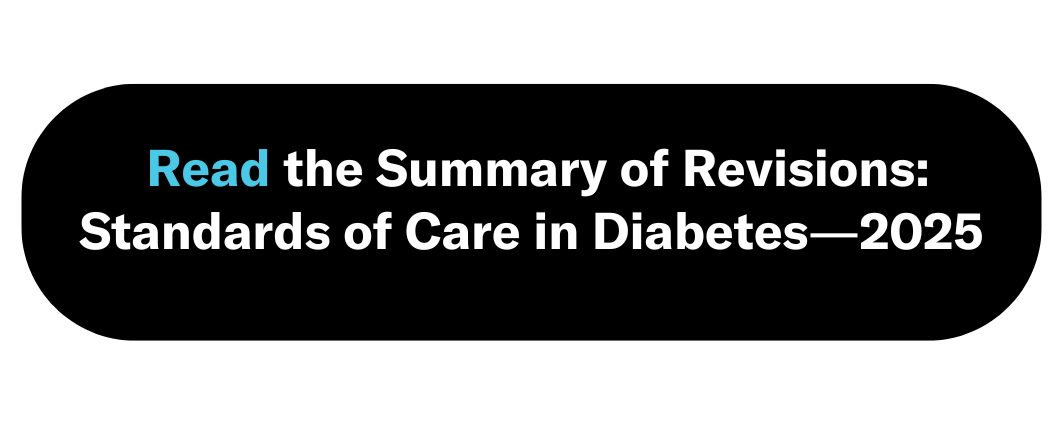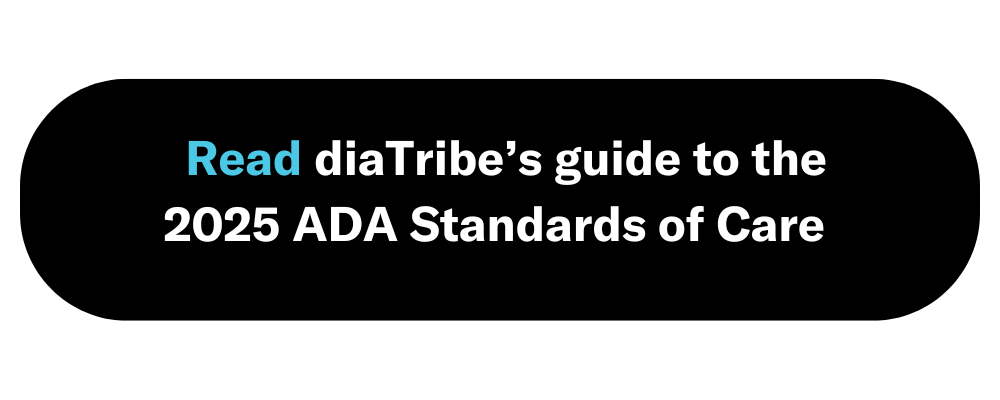The 2025 American Diabetes Association Standards of Care in Diabetes is here—and they’ve made it clear that CGM (continuous glucose monitor) metrics, like time in range, are vital for daily diabetes management.
The ADA Standards of Care are updated annually and include expert recommendations for treatment and management of all kinds of diabetes based on the latest evidence. The Standards of Care recognizes time in range (TIR) as a valid glycemic assessment in people with diabetes (6.1) associated with the risk of microvascular complications and acknowledges time below range and time above range as useful parameters for evaluating treatment. It also recognizes the limitations of A1C—and highlights that A1C does not provide a measure of glycemic variability or hypoglycemia. You can find summaries on past Standards of Care and their parameters around time in range by clicking here.
The Standards of Care state that people with diabetes should be offered any kind of diabetes device, including continuous glucose monitoring (CGM). This means that whether you are treating someone with type 1, type 2, LADA, gestational, or any kind of diabetes—a CGM can be useful to daily diabetes management. Time in range is most easily found through CGM, and expanding access to CGM will expand access to time in range—which is shown to lower A1C, improve quality of life, and so much more.
This year, the Standards of Care include some major updates that further encourage the use of time in range:
The Standards of Care now state (7.16) that in addition to those on insulin, CGM should be considered in adults with type 2 diabetes treated with glucose-lowering medications other than insulin to achieve and maintain individualized glycemic goals. In fact, rtCGM benefits were reported in a mixed population (including people not using insulin) of adults with type 2 diabetes with reduction in A1C levels, increase in TIR, and reduction of time in hyperglycemia.
There is also a new recommendation (7.8) that underscores that CGM should be introduced as early as possible in people with diabetes, even at diagnosis. The metrics CGMs provide are actionable and shown to improve management while reducing the burden of living with diabetes—there’s no reason to wait for these benefits!
The ADA has included (7.9) that the Ambulatory Glucose Profile Report (AGP report) is vital for daily and weekly diabetes management and should be available to all healthcare professionals and utilized by them. This underscores what we already know—the metrics that CGMs provide are like no other.
Guidelines around glucose targets in older adults now include time in range (13.8) alongside A1C. CGM metrics have increased benefit in this population as A1C is inaccurate more often in older adults.
Finally, the guidelines for CGM use in pregnancy have been updated to include that CGM is not only beneficial for people with Type 1 diabetes who are pregnant but that there’s potential benefit in other types of diabetes in pregnancy as well (15.10).
Expanding CGM access and more inclusion of time in range as standard components of the ADA Standards of Care are vital for ensuring that everyone with diabetes is leveraging time in range for daily diabetes management. Healthcare professionals all over the U.S. turn to these recommendations as guidelines for their clinical practice. When healthcare teams are educated and excited about time in range, those in their care follow.


